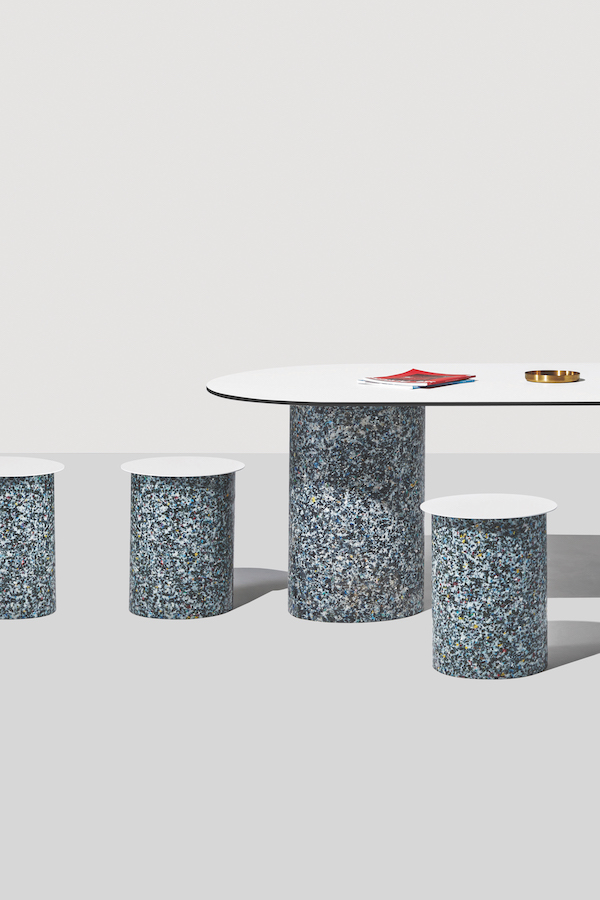When buying furniture for your home, it can be hard to resist that brand-new coffee table, but buyer beware, if it only cost $100, chances are it won’t last long. Fast furniture, like fast fashion, is increasingly becoming a problem around the world. Wood veneer and engineered woods can’t be sanded back and retreated, and when a poor quality knob or a bracket breaks, replacements are often hard to find. Poor quality and lack of repair-ability means a lot of surprisingly new furniture ends up in landfill.
Luckily, there are lots of options for the ethical consumer. Re-use offers a fantastic opportunity to obtain high quality pieces for a much more affordable price tag, even if they might need a little love. The dark wood furniture aesthetic is now being revived by a new generation taking advantage of the quality and availability of these items. Second hand furniture, lighting and other items are also now available through sites like Ebay, Gumtree, Instagram and Facebook Marketplace. Older pieces that need a little love are often made of solid wood that can be sanded back and re-stained, which can be a fun weekend project or can be put into the hands of an expert via furniture restorers or repair cafes.
Adelaide-based designer Guy Keulemans has dedicated his career to repair. He says: “We’ve become too well adjusted to the idea that furniture can be cheap. If you’re interested in being long-lasting, you need to spend more on your furniture.” Part of the right to repair movement, Keulemans believes not only that items should be repairable, but also that designers and artists are ideally placed to do the repairing. “They have skills, they have the knowledge of tools and techniques,” he says. His latest project on transformable repair with research partner Trent Jansen set designers and artists with the task of repairing one broken item each, with the resulting objects to be auctioned off at the Australian Design Centre in June, 2022. One example is the transformation of a pair of vintage 1950s Plan-o-spider woven chairs, owned by gallerist Sally Dan-Cuthbert, including replacement of broken webbing, fixing of a broken leg and new powder coating of the metal frame. Master weaver Liz Williamson enlisted textile artist Tulla Carson to help weave a new seat in golden cord, while the old webbing was used to create three woven artworks.
Another option is to buy high quality furniture pieces from local Australian designers and makers. Dan-Cuthbert sells a range of functional art through her Sydney gallery, Gallery Sally Dan-Cuthbert, including furniture pieces. Melbourne designer Damien Wright’s tables Spun and Spin are examples of one-off items with significant cultural value and longevity. To create these round wooden tables, large and small, Wright researched and sourced an incredibly rare raw material – a semi-petrified 10,000-year-old ancient red gum that was a waste bi-product of a mining operation in Wodonga, Victoria. Now transformed by Wright into stylish round black wood tables, these are investment pieces that will no doubt become tomorrow’s heirlooms.
First Nations makers are also creating sustainable products for the home. Sydney-based furniture company Koskela has been collaborating with First Nations Peoples since 2009 to create and sell lighting and other woven pieces, and, in that time, has returned $1.1 million to Aboriginal and Torres Straight Islander communities around Australia. For example, the Gurrwilinywirriy Mundan pendant designed by Bula’Bula artist Margaret Malibirr from Ramingining in North East Arnhem Land, is made using traditional bush string from the fibres between the bark and the trunk of the kurrajong tree. It is the combination of contemporary design with ancient traditions and materials that makes these lights so unique.
Buying furniture made from recycled materials is another great way to choose ethical design because it removes waste from landfill. Sydney-based studio Design by Them sells the Confetti range of furniture which is made from recycled plastic in a delightful rainbow of colours.
Designed by Sarah Gibson and Nicholas Karlovasitis (Gibson Karlo), the series is made from roto-moulded pelletised post-consumer plastic waste (HPDE such as milk bottles and shampoo containers) and factory waste, and includes tables, stools, benches, planters, chairs, lounges and accessories.
“The material was sourced in Australia and was previously used in industrial applications only,” says Gibson Karlo. “We worked closely with the manufacturers to transition the product into the furniture industry and formulated our own unique recipe and specialised fabrication methods.”
Being thoughtful about your furniture purchases is vital if we want to avoid fast furniture. Where possible, opt for longer-lasting quality pieces – if they are made locally or by Indigenous makers, all the better. If this is beyond your budget, look into reuse and repair options. Finally, why not choose to buy a piece of recycled plastic furniture? As well as being very cool to look at, they are preventing plastics from polluting our planet.
Feature image:The Confetti range designed by Gibson Karlo, 2018 for DesignByThem. Photo: Pete Daly. Courtesy: the artists.

